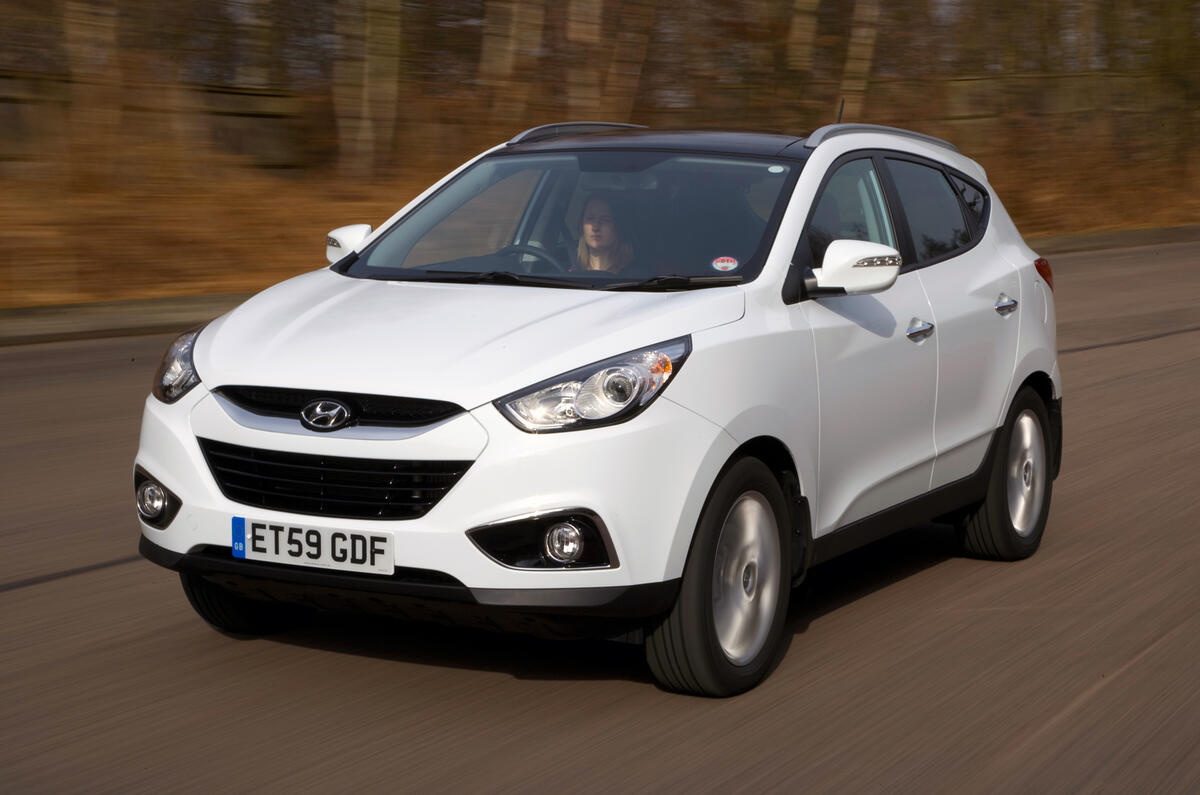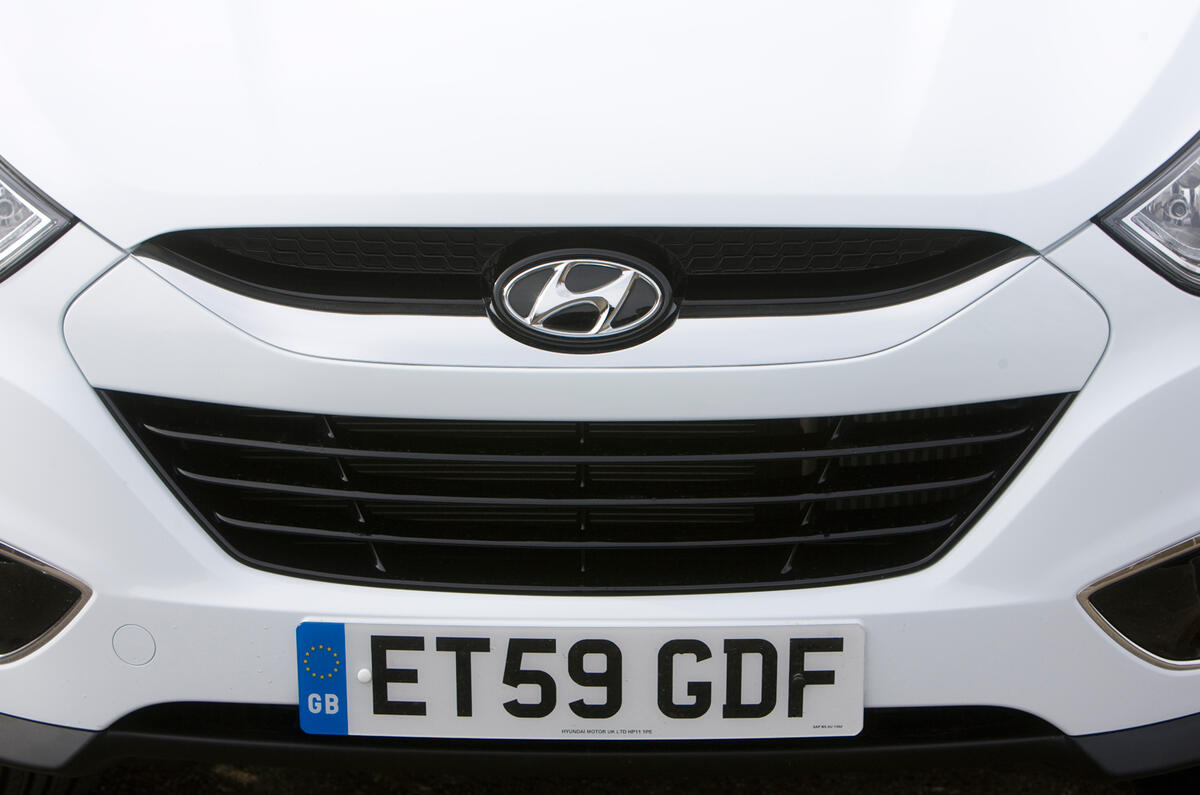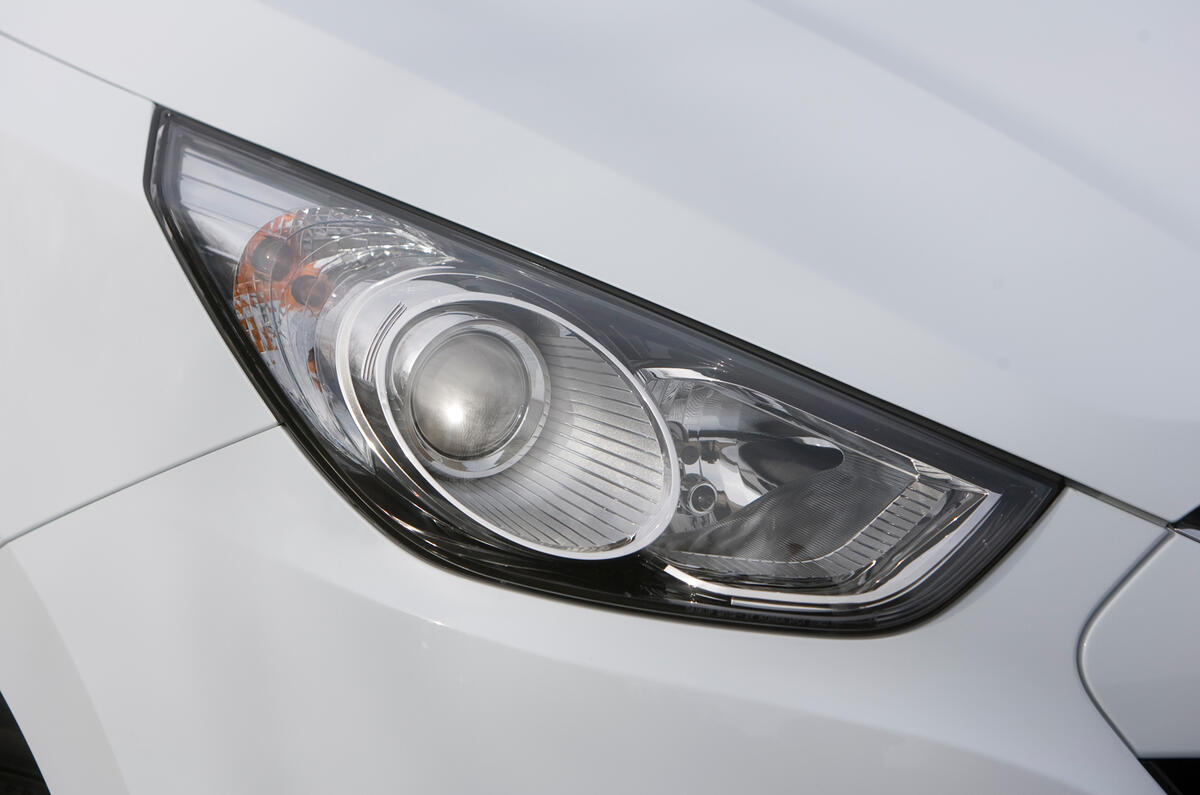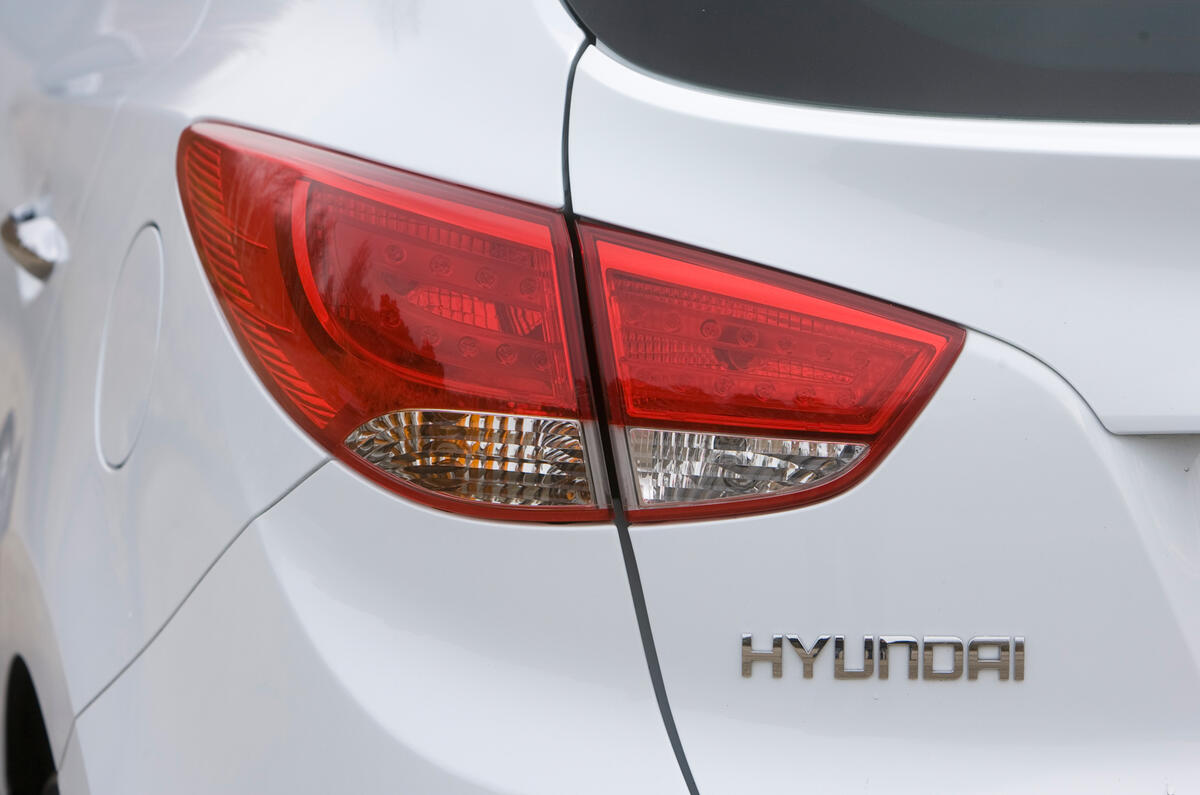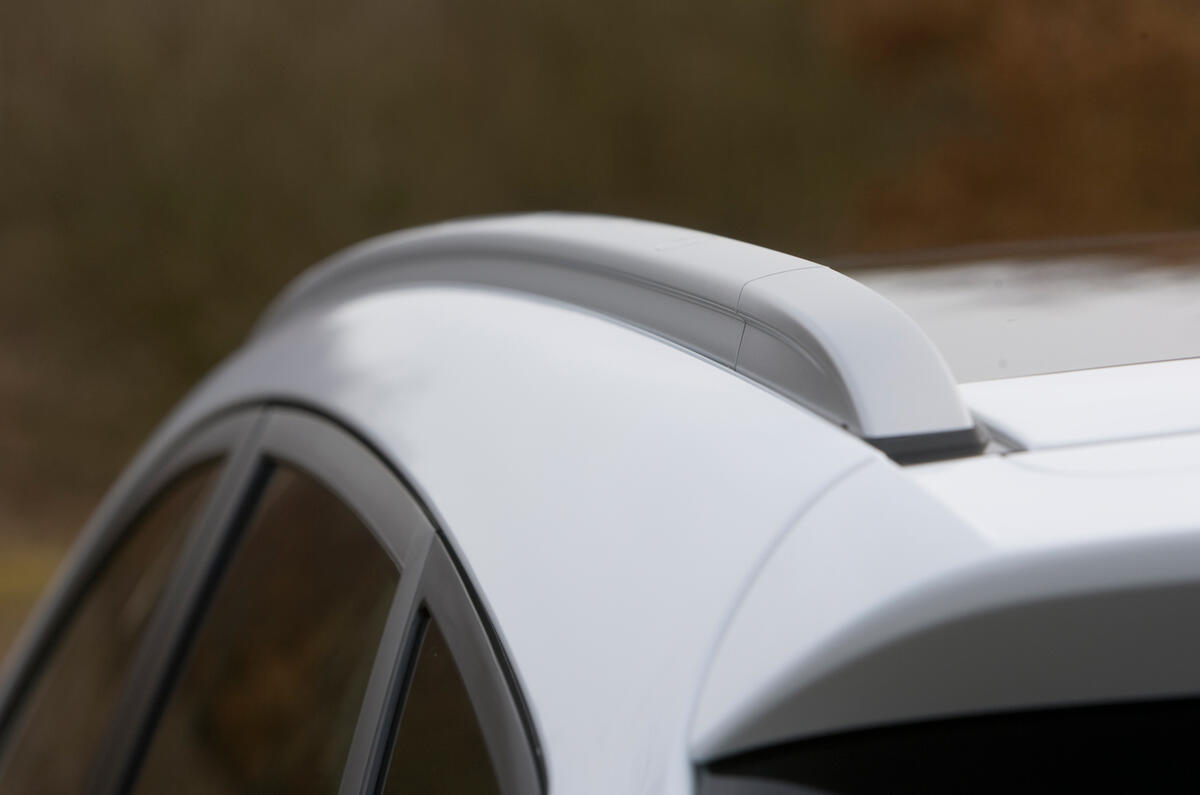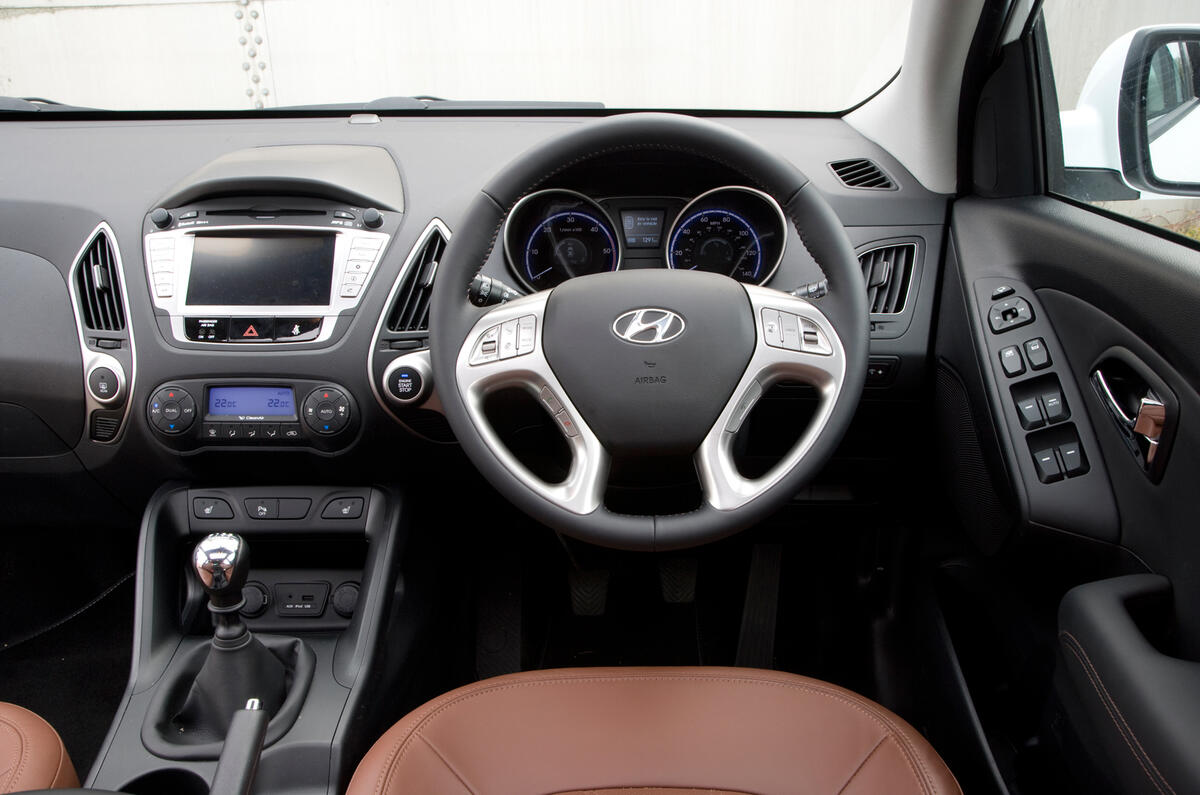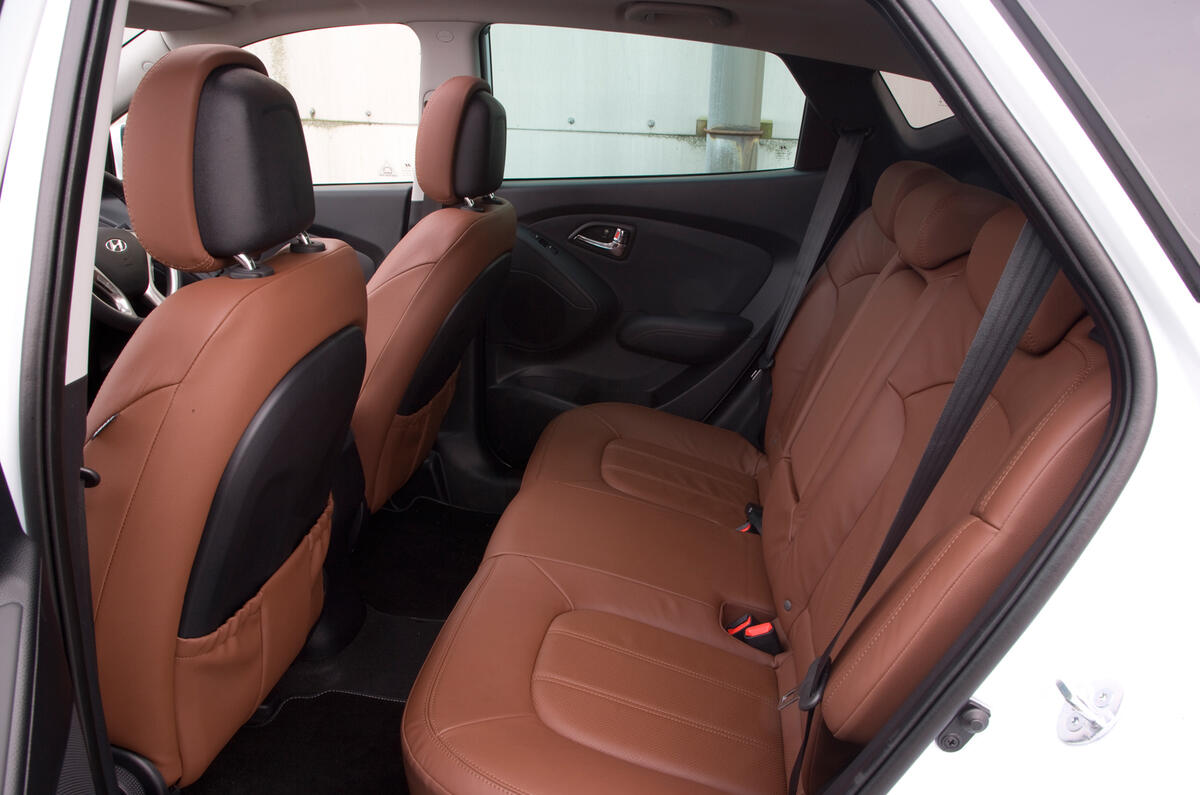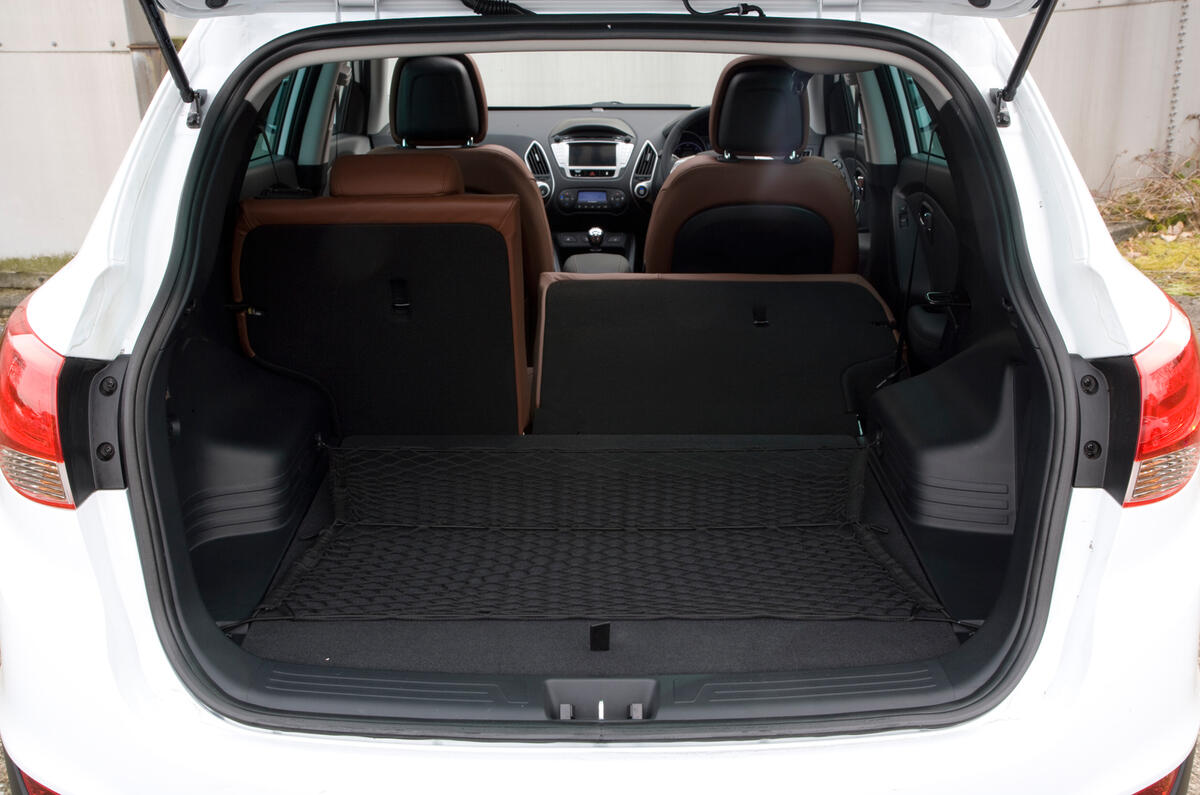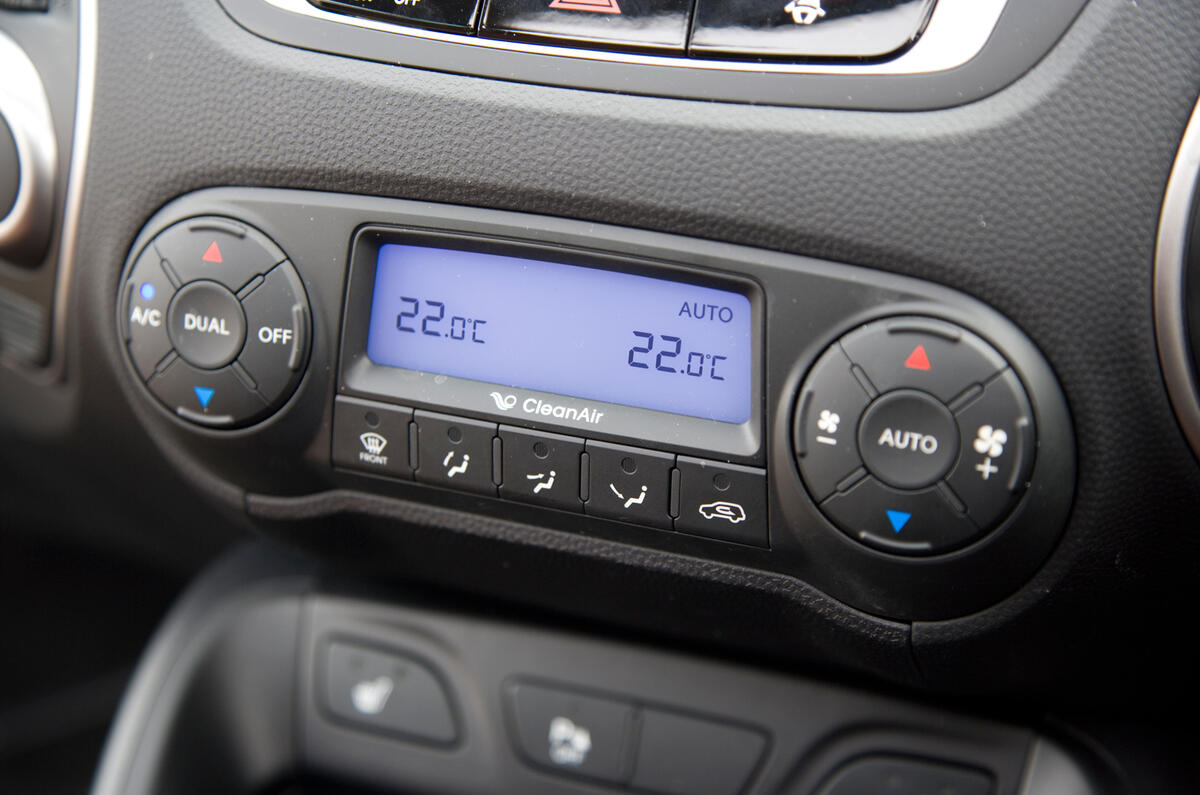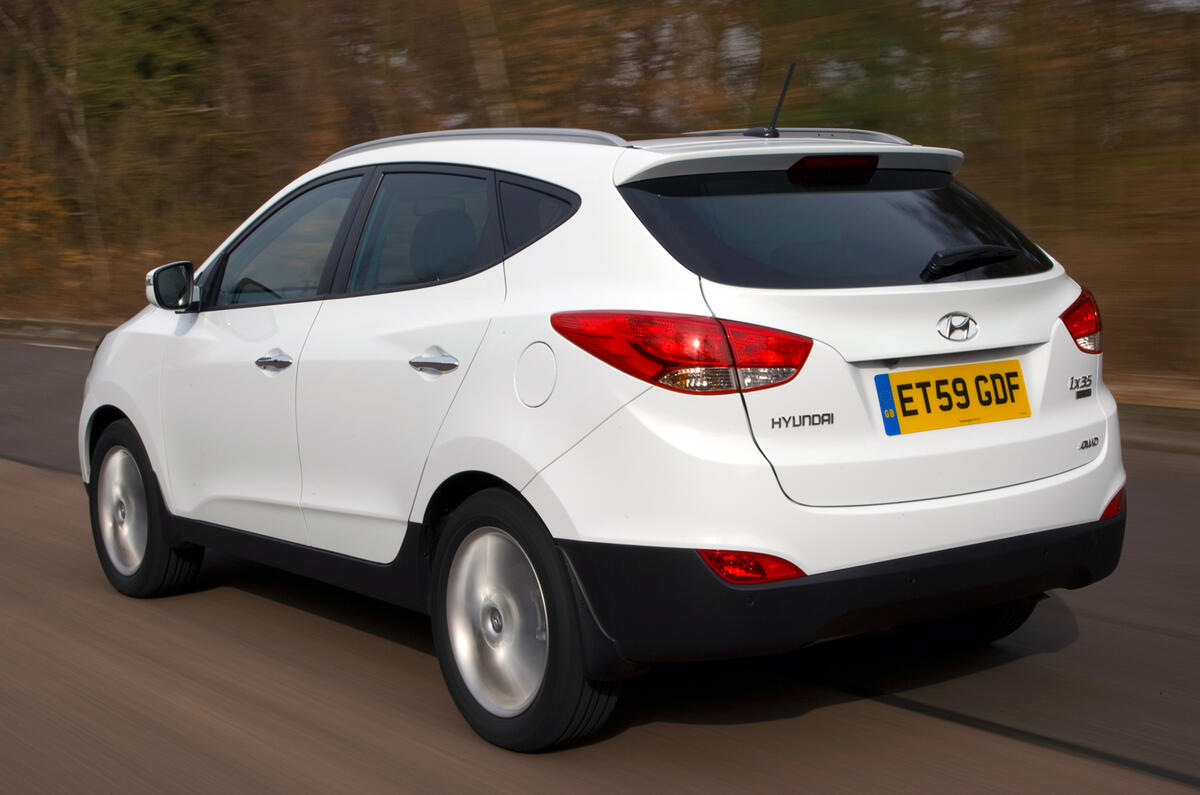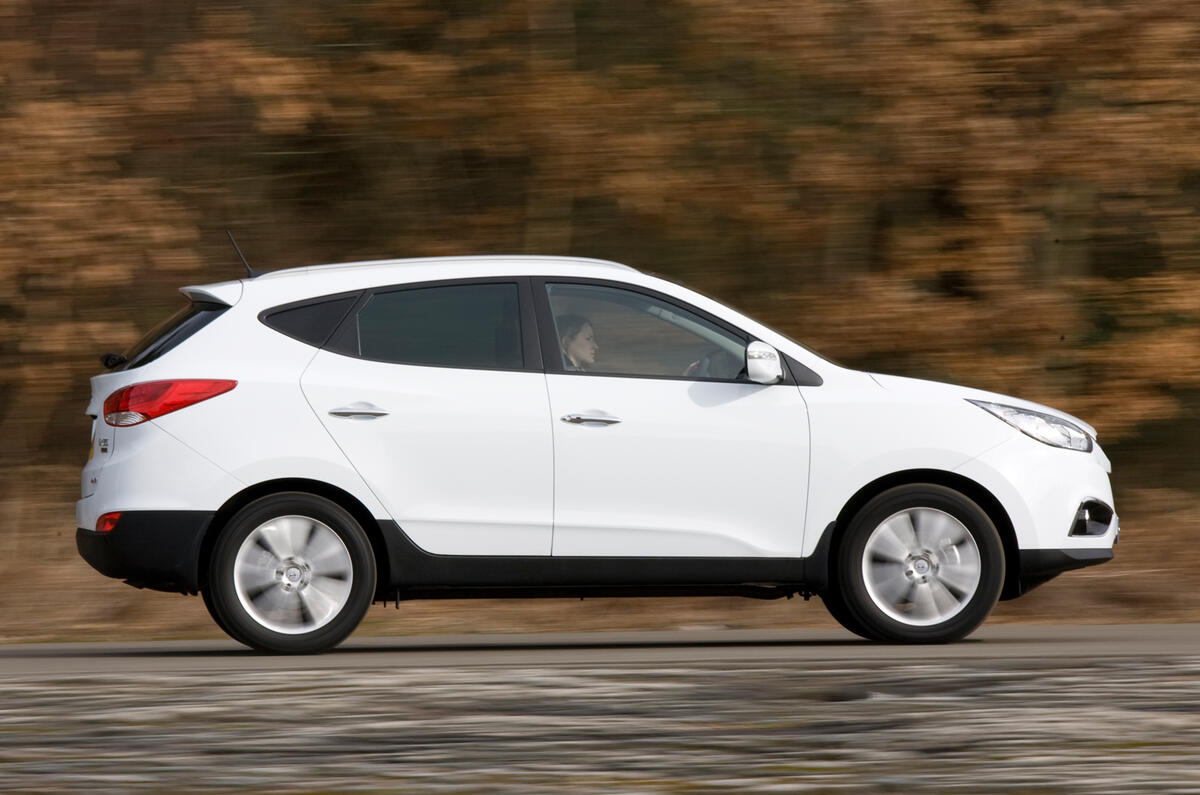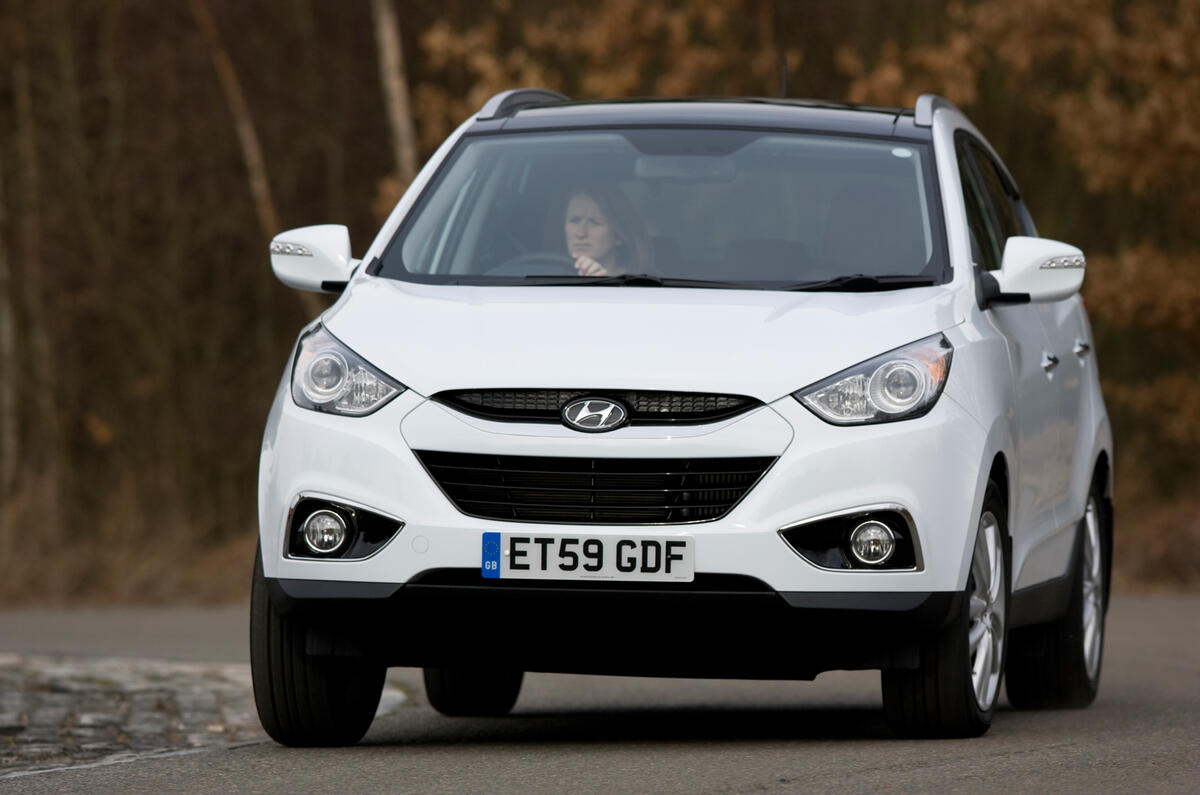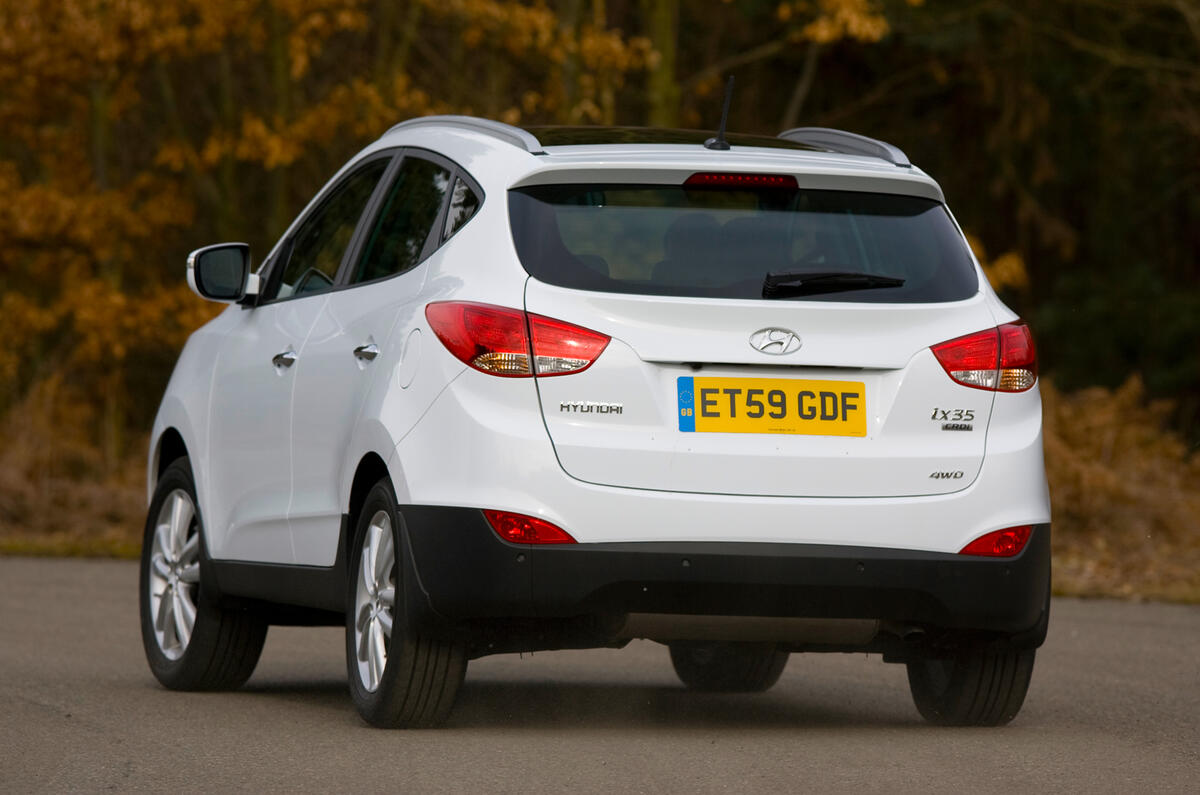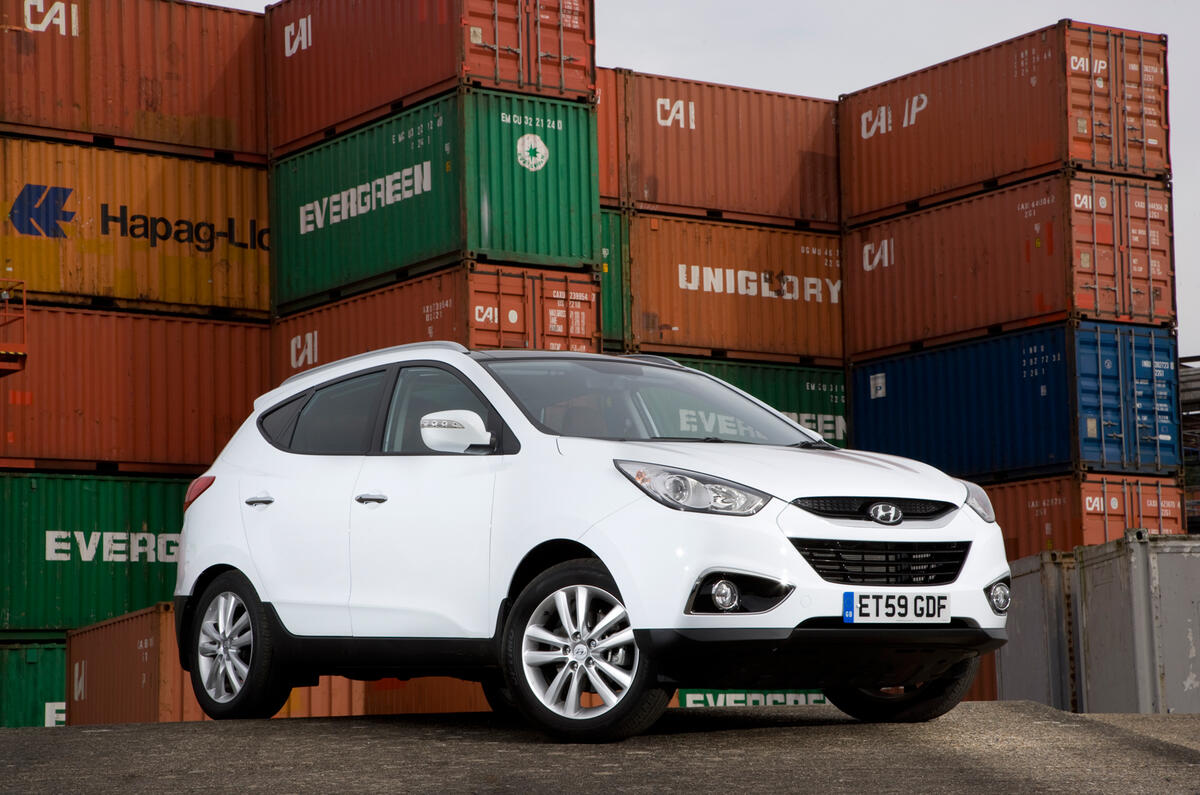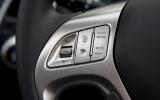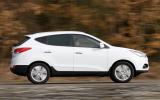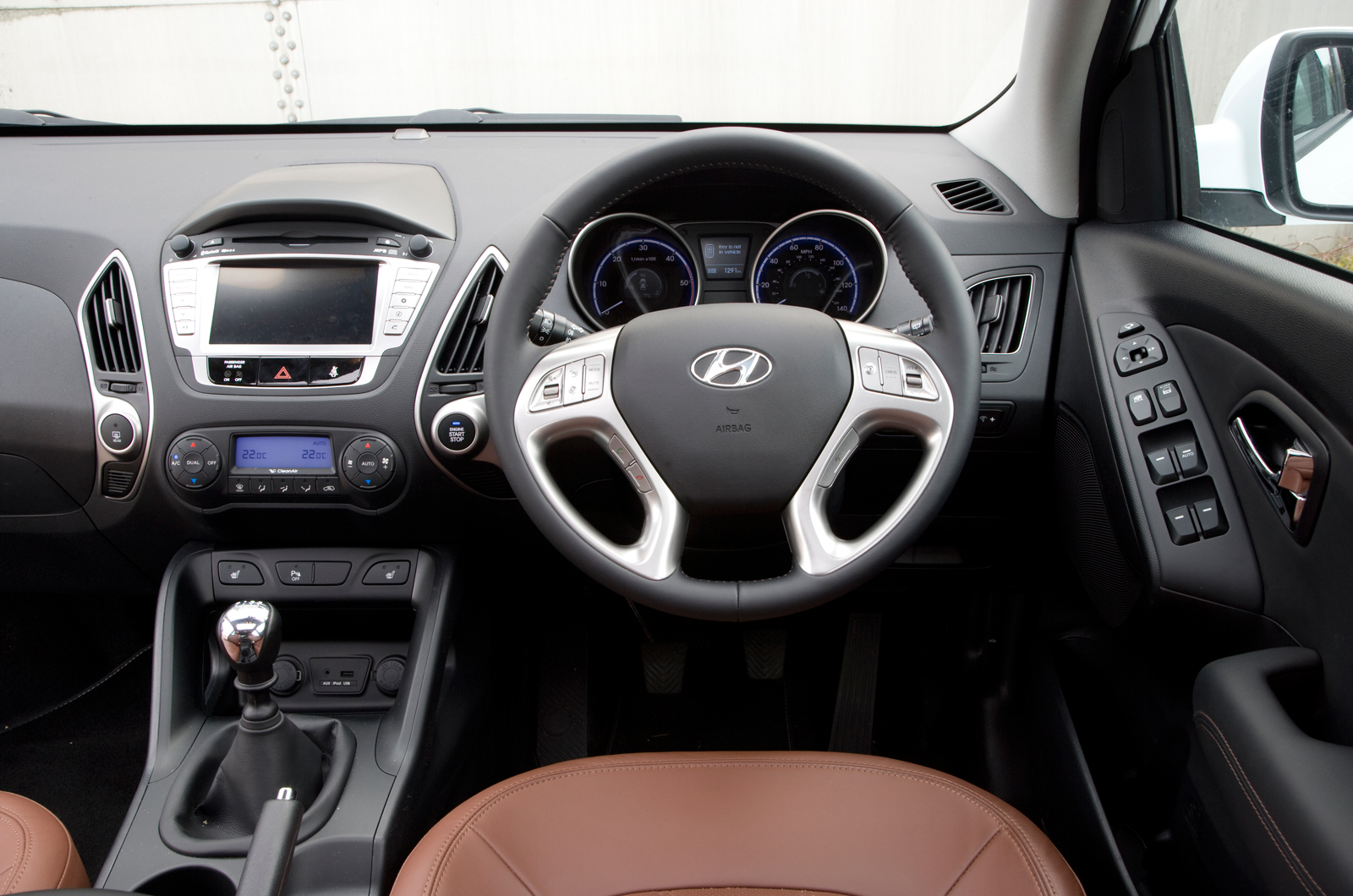It is the mid-range muscle of the 2.0-litre turbodiesel motor that will be of most appeal to ix35 drivers interested in the richer end of the model range. With the full 236lb ft of torque available from 1800rpm to 2500rpm, it’s easy to keep the engine comfortably in its powerband and make the most of the acceleration on offer. Otherwise, the outright pace is good for an SUV of this size and weight, with our test figures matching Hyundai’s claimed 0-62mph time of 10.2sec.
However, this is not the big seller in this range – that honour falls to the 114bhp 1.7 CRDi, which can only be had in two-wheel drive, as with the 133bhp 1.6 GDi petrol motor that forms the entry-level option. For all-wheel drive or an auto ‘box you have to opt for the bigger 2.0-litre diesel.
Most of the time the ix35’s 2.0 diesel motor is refined enough, but it’s gruff when cold and intrudes into the cabin through the bulkhead if you’re working the engine more than moderately. Engine noise is naturally less evident when cruising at higher speeds, although it could be quietened further with little effort. Because of its ample torque, the flagship diesel ix35 could use a longer sixth gear than its current top ratio, which leaves it spinning at about 2500rpm at 70mph. The 1.7-litre CRDI is quieter like-for-like, but the need to work it slightly harder than the 2.0-litre offsets that advantage slightly.
Our test economy will be of concern to prospective buyers, too. At just 36.2mpg, it fell a long way short of the official combined figure of 47.9mpg for the 2.0-litre CRDi. Our touring figure of 43.8mpg, which was recorded over a specific test route at a moderate touring pace, proves that better fuel economy is achievable, but to get it requires more conscious effort than should be necessary.
For this reason, and because the 1.7 CRDi makes for a very respectable engine in terms of its response and refinement, we’d recommend you go for the smaller diesel motor. It makes more financial sense in just about every way, and is likely to regularly get closer to Hyundai's combined economy claim of 48.7mpg. You just need to be able to live without four-wheel drive.
While the 2.0-litre petrol may seem a good option for saving even more cash thanks to its £1500 saving over the cheapest diesel, you will sacrifice a great deal. Though power is quoted at 161bhp, torque is only 143lb ft and is delivered high up in the rev range at 4600rpm. This means, unlike in the diesels, maintaining speed is very hard work. The situation is made worse in the petrol thanks to its boomy engine note and rubbery gearshift. If you want an ix35, choosing between the diesels should be the only engine choice you make.



